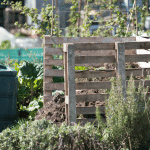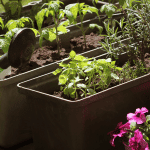What To Grow From Seed In January
As the cold, dark days of January set in, it can feel like a long wait until spring arrives and the garden starts to come alive once more. But, believe it or not, January is actually the perfect time to start sowing seeds for many vegetables, herbs and salad items. So, if you’re looking to keep your green fingers busy, now is the perfect time to start planning what you’ll grow in your garden this year.
First and foremost, it’s important to remember that January is a time to be patient and not expect immediate results. The soil is cold and often too wet to work with, but if you can wait a few more weeks, you’ll be able to get started on planting out some of the early spring crops that will provide you with fresh produce in a few months’ time.
Vegetables to sow in January
One of the most popular vegetables to sow in January is garlic. It’s incredibly easy to grow and a great crop for beginners. All you need to do is plant cloves (the individual sections of a garlic bulb) in well-drained soil, about an inch deep, and then wait for the bulbs to form. They’ll be ready to harvest in late summer.
Another vegetable that’s well worth planting in January is broad beans. These hardy beans are a staple of the British garden and are very easy to grow. Simply sow the seeds directly into the ground, or into pots, and then plant out the young plants in the spring when they’re big enough. They’ll provide you with a delicious harvest from May onwards.
Salad items to sow in January
January is also a great time to start sowing salad items such as lettuce, rocket and spinach. These quick-growing crops are perfect for providing fresh greens during the cold winter months, when there’s not much else available. Simply sow the seeds in trays or pots, and then plant out the young plants in the spring when they’re big enough.
Herbs to sow in January
Herbs are another great crop to sow in January. Chives, parsley and coriander are all perfect for growing in pots on a windowsill, where they’ll get plenty of light. Simply sow the seeds in compost, water well and then wait for the herbs to germinate. In a few months’ time, you’ll have fresh herbs to add to your cooking.

Tips for growing in January
Growing in January can be a bit of a challenge, but with a few tips and tricks, you can have a great time and reap the rewards later in the year. Here are a few things to keep in mind:
- Keep an eye on the weather. January can be very wet and cold, so make sure you’re not planting out in heavy rain or strong winds.
- Make the most of any bright, sunny days. If you’re able to get out into the garden, make the most of it! Sow seeds, plant garlic, and do any other jobs that need doing.
- Be patient. Remember, January is a time for planning and preparation, not for immediate results.
- Keep your seeds and young plants warm. If you’re sowing seeds in trays or pots, make sure they’re in a warm place where they won’t get too cold.
Bonus: 5 gardening tasks to do during January
- January is an ideal time to prune shrubs and trees in your garden, before the new growth begins. Pruning helps to maintain their shape and remove any diseased or dead branches.
- The start of the year is the perfect time to plan your gardening projects for the coming months. Order seeds and bulbs of your favourite flowers, vegetables and herbs to start growing them indoors or prepare for planting in the spring.
- Make sure your garden tools are in good condition before you start using them again. Clean, sharpen and oil them to ensure they are ready for use when you need them.
- Conduct a soil test to determine the pH level and nutrient levels of your soil. This will help you decide what kind of soil preparation you need to do in preparation for the spring planting season.
- Use the winter months to plan your garden, decide what you would like to plant, and where you want to plant it. Take into consideration the amount of sunlight and water each area gets, and plan your garden accordingly.
So, there you have it, some ideas and tips on what to grow in January, along with some bonus gardening tasks to complete during January in order to get ready for spring. Don’t forget… whether you’re a seasoned gardener or a complete beginner, January is the perfect time to start your gardening adventure!















No comments.